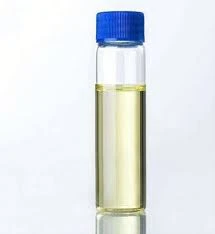pam chemical water treatment
PAM Chemical Water Treatment A Comprehensive Overview
Water is an essential resource for life, and ensuring its purity and safety is critical for public health and environmental sustainability. One of the chemical treatments making waves in the water treatment sector is the application of Polyacrylamide (PAM). This article delves into the role of PAM in water treatment processes, its benefits, and its environmental implications.
What is PAM?
Polyacrylamide (PAM) is a synthetic polymer that can be used in various applications, including as a flocculant in water treatment. It is produced through the polymerization of acrylamide monomers, resulting in a high molecular weight compound that can enhance water clarification processes. PAM is categorized mainly into two forms cationic and anionic, with their usage dependent on the specific characteristics of the water being treated and the contaminants present.
Role of PAM in Water Treatment
PAM plays a pivotal role in the coagulation and flocculation processes, which are essential methods in water treatment. Coagulation involves the destabilization of suspended particles, while flocculation refers to the agglomeration of these destabilized particles into larger aggregates called 'flocs.' The introduction of PAM in these processes can significantly improve the efficiency and effectiveness of water treatment operations.
1. Coagulation and Flocculation PAM serves as an excellent coagulant aid, enhancing the performance of traditional coagulants such as aluminum sulfate. By adding PAM, smaller particles can aggregate more effectively, leading to larger floc formations that settle more easily during sedimentation.
2. Sedimentation The larger flocs formed with the help of PAM facilitate quicker and more efficient sedimentation, resulting in clearer water and reduced sludge volume.
3. Filtration In certain applications, PAM can improve the efficiency of filtration processes. The formation of flocs helps to increase the surface area, enhancing the capture of particles during filtration and resulting in clearer effluent.
4. Sludge Management In wastewater treatment, the application of PAM aids in the dewatering of sludge. It reduces the moisture content of the sludge, making it easier to handle and dispose of while also minimizing the volume of sludge that requires further treatment.
pam chemical water treatment

Advantages of Using PAM in Water Treatment
The incorporation of PAM in water treatment processes offers several advantages
- Improved Water Clarity PAM enhances the quality of treated water by ensuring the effective removal of suspended solids and impurities.
- Cost-Effectiveness By improving the efficiency of existing treatment processes, PAM can lead to a reduction in the amounts of coagulants required, thereby lowering operational costs.
- Versatility Depending on the formulation, PAM can be customized to address specific types of contaminants, making it suitable for a variety of water sources, including industrial wastewater and natural bodies of water.
Environmental Considerations
While PAM is widely regarded as safe for use in water treatment, it is essential to consider its environmental implications. The production and disposal of PAM can pose potential risks if not managed correctly. Concerns primarily revolve around the toxicity of acrylamide, a component used in its synthesis, which may have adverse effects on aquatic life if released in significant quantities.
To mitigate these risks, it is crucial to adhere to regulatory guidelines and best practices in using PAM. Manufacturers and water treatment facilities must ensure proper dosage and effective wastewater management to minimize any potential impacts on the environment.
Conclusion
PAM has emerged as a powerful tool in the water treatment industry, aiding in various processes from coagulation to sludge management. Its ability to improve water clarity, reduce costs, and enhance treatment efficiency makes it a preferred choice among operators. However, with its benefits comes the responsibility of ensuring environmentally conscious usage. By embracing careful management practices and adhering to safety standards, PAM can continue to play a vital role in promoting cleaner, safer water for our communities and ecosystems. The future of water treatment is bright with innovations like PAM, paving the way for sustainable solutions to one of our most pressing global challenges.
-
2-Phosphonobutane-1,2,4-Tricarboxylic Acid: Scale & CorrosionNewsAug.29,2025
-
Premium Isothiazolinones | Broad-Spectrum Biocidal SolutionsNewsAug.28,2025
-
LK-319 Special Scale And Corrosion Inhibitor For Steel Plants: Advanced Solutions for Industrial Water SystemsNewsAug.22,2025
-
Flocculant Water Treatment: Essential Chemical Solutions for Purification ProcessesNewsAug.22,2025
-
Isothiazolinones: Versatile Microbial Control Agents for Industrial and Consumer ApplicationsNewsAug.22,2025
-
Scale Inhibitor: Key Solutions for Water System Scale PreventionNewsAug.22,2025





